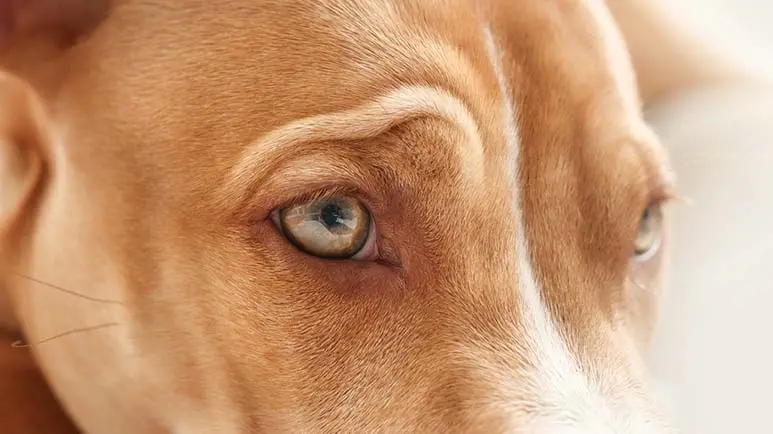How Your Dog Sends You Messages With His Eyes
Ever wonder how your dog can tell you what he wants just by looking at you? And how you give him cues from your gaze? This fascinating study uncovers how dogs communicate, and it's not what most people suspect.

STORY AT-A-GLANCE
- A recent study shows that certain species of canines communicate with their eyes. Facial coloring, eye shape, and the color and shape of the iris and pupil are all features of canine eye-based communication
- Canines that live in cooperative groups and hunt in packs communicate with their eyes. Species like the fennec fox and bush dog, who are more likely to live alone or in pairs, have not adapted facial and eye features helpful to eye-based communication
- Gaze communication may be a useful tool for other canines as well, including domestic dogs. Pet dogs have evolved to view humans as social partners, which is why they make direct eye contact with humans
Editor's Note: This article is a reprint. It was originally published February 17, 2015.
According to the results of a recent study, your dog is communicating with his canine friends (and foes) using his eyes alone. And in fact, some of his facial features may be designed specifically for that purpose, including the coloring around his eyes, the shape of the eyes, and the color and shape of the iris and pupil. These are all elements of the canine eye-based communication system.1
Gray Wolves Adapted Gaze Signals to Help Them Hunt in Packs
Researchers at the Tokyo Institute of Technology at Kyoto University in Japan compared 25 different types of canines and separated them into 3 groups based on their facial coloration and gaze:
- Group A — Species with clearly visible pupils and eye position (example: gray wolf)
- Group B — Species with clearly defined eye placement but camouflaged pupils (fennec fox)
- Group C — Species with fully camouflaged eyes and pupils (bush dog)
The researchers observed that canines in Group A, those with clear pupil and eye positioning (which includes wolves and domestic dogs), tended to live in groups, while those in Groups B and C (for example, Group B foxes), tended to be more solitary or live in pairs.
The researchers theorize that the species in Group A adapted “gaze signals” to help them hunt in packs and live cooperatively in groups. Group B canines, including foxes, only use eye communication some of the time. The all-dark eyes of animals in Group C, such as bush dogs, blend in with their facial coloring. According to the researchers, it is typical of various types of predators to obscure their eyes to improve their hunting prowess. (If a prey animal can’t tell where his predator is looking, he can’t predict what might happen next.)
The Whites and Irises Are Important Features of Canine Eye Communication Systems
The researchers speculate that the whites of the eyes (sclera) of the Group A canines evolved to amplify the appearance of the darker iris and pupil. This applies to wolves, dogs, and also humans.
The researchers were also interested in the reason for lighter iris coloring in some canine species. Since it is generally assumed that lighter irises are an adaptation to ultraviolet light, the researchers compared three wolf species from Group A — one native to the arctic, another to temperate climates, and the third to subtropical regions. Iris color didn’t vary much between the three species, leading the researchers to conclude that iris coloring is used primarily to facilitate eye communication.
The study authors also looked at social behaviors in the three groups and found a number of social species in Groups B and C — animals that normally live in pairs or alone. As it turns out, the more social species within those groups are known to use auditory or other visual signals to communicate with each other, for example, a cry or howl, or a tail flash. This adaptation may help the Group B and C canines catch prey that can identify a gaze and escape before being caught.
Oh, Those Puppy Dog Eyes
According to the researchers, gaze communication may be a very useful tool for other canines as well, including the family dog. Prior studies have shown that domestic dogs are more likely to make direct eye contact with humans than wolves raised in the same environment.2,3
Jason Goldman, writing for Scientific American, offers a thought-provoking explanation for why a pet dog, but not a hand-raised wolf, studies human gaze signals:
“It isn’t only the source of their food that changed as wolves became dogs; their entire social ecology changed. Instead of sharing social space primarily with other wolves, dogs came to treat humans as social partners. This is one of the critical differences between a domesticated and a wild animal that is simply habituated to the presence of humans. Domestication is a genetic process; habituation is an experiential one. Domestication alters nature, habituation is nurture.”4
So now you know (in case you didn’t already) that when your dog looks directly at his “social partner” (you), he’s communicating with you. He’s receiving cues from your gaze, and he’s also sending you messages with those puppy dog eyes.
Sources and References
- Discovery News June 24, 2014
- 1 PLoS ONE, June 11, 2014
- 2 Miklosi A, et al. A simple reason for a big difference: wolves do not look back at humans, but dogs do. Current Biology. 2003 Apr 29;13(9):763-6
- 3 Developmental Psychobiology. 2005 Sep;47(2):111-22
- 4 Scientific American April 30, 2012











